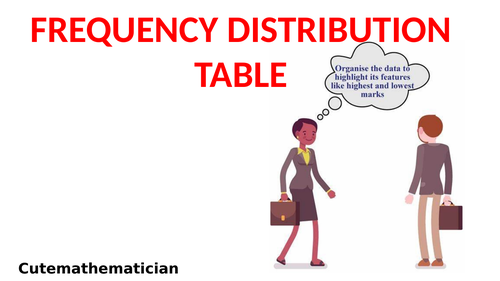
Contains 20 slides
**Objective: The student will be able to organize the given data to a meaningful and understandable.
**
The presentation contains:
Definition of a Frequency Distribution Table.
Types of Frequency Distribution Table:
a) Discrete Frequency Distribution Table (Ungrouped).
b) Continuous Frequency Distribution Table (Grouped).
Uses of Frequency Distribution Data.
5 steps to construct a Frequency Distribution Table with one example on ungrouped data and two examples on grouped data.
Steps include how to
- Draw the table arrange columns
- Fill in the data in the first column
- Tallying the observations in the second column
- Summing up in the third column.
Under Grouped data we have one example each on the types
Types of Grouped Data:
a) Continuous Interval Form (Exclusive Form). e.g. overlapping
b) Discontinuous Interval Form (Inclusive Form). e.g. non - overlapping
To understand in details the difference between two class intervals
- overlapping
- Non- overlapping
To know different terms with examples
- Class interval
- Lower class limit
- Upper class limit
- Width of class interval
Something went wrong, please try again later.
This resource hasn't been reviewed yet
To ensure quality for our reviews, only customers who have purchased this resource can review it
Report this resourceto let us know if it violates our terms and conditions.
Our customer service team will review your report and will be in touch.
